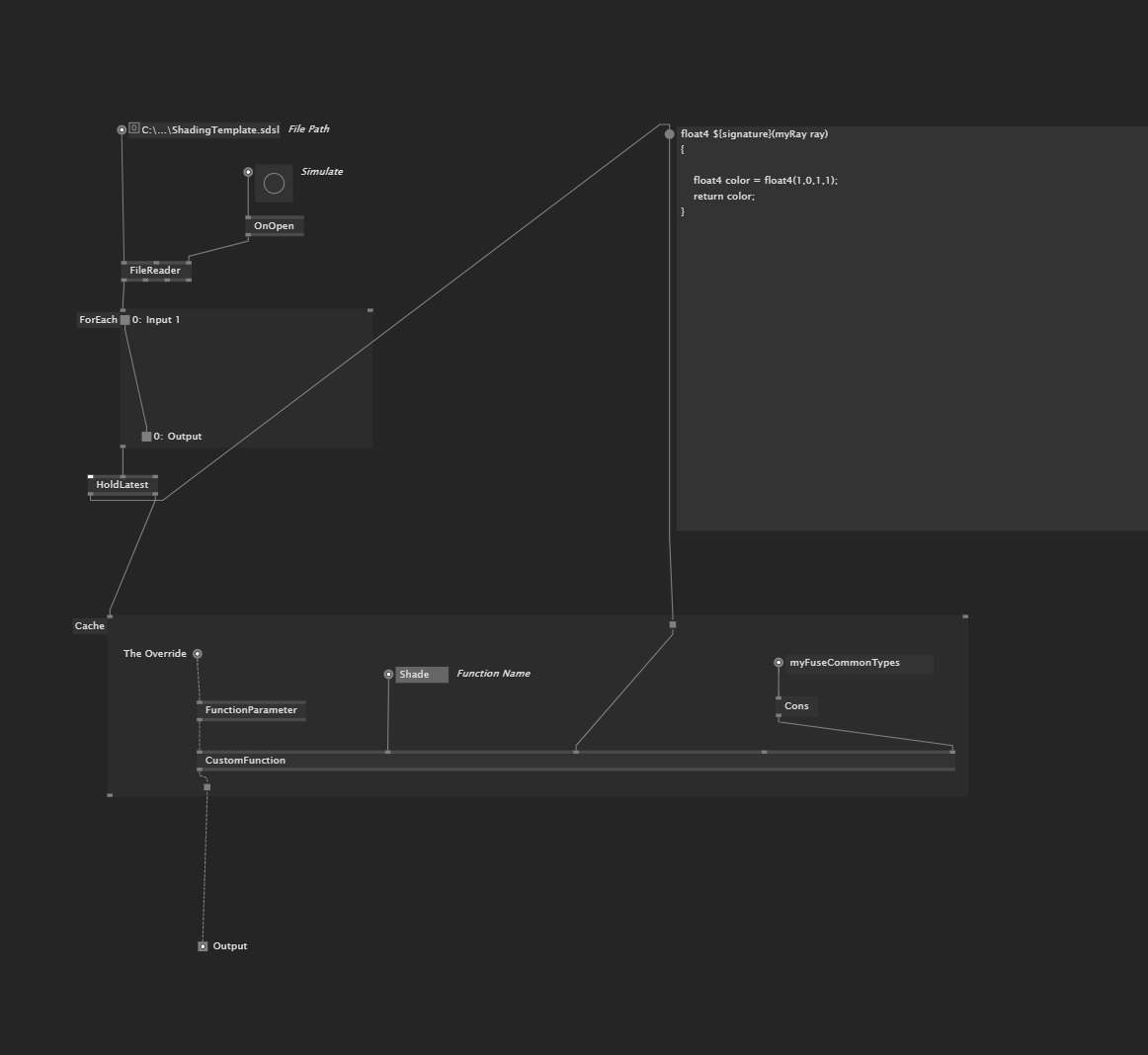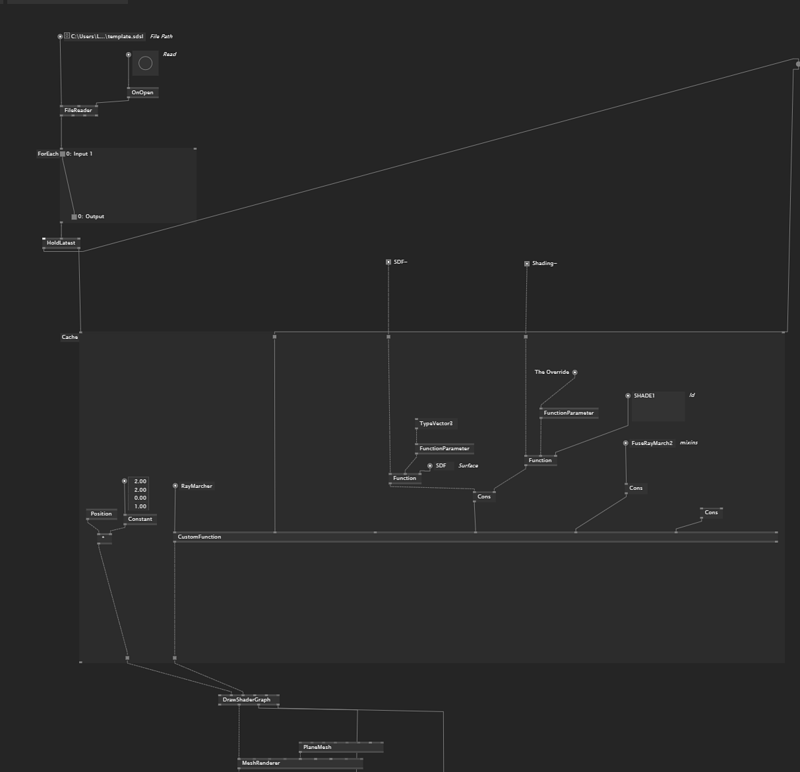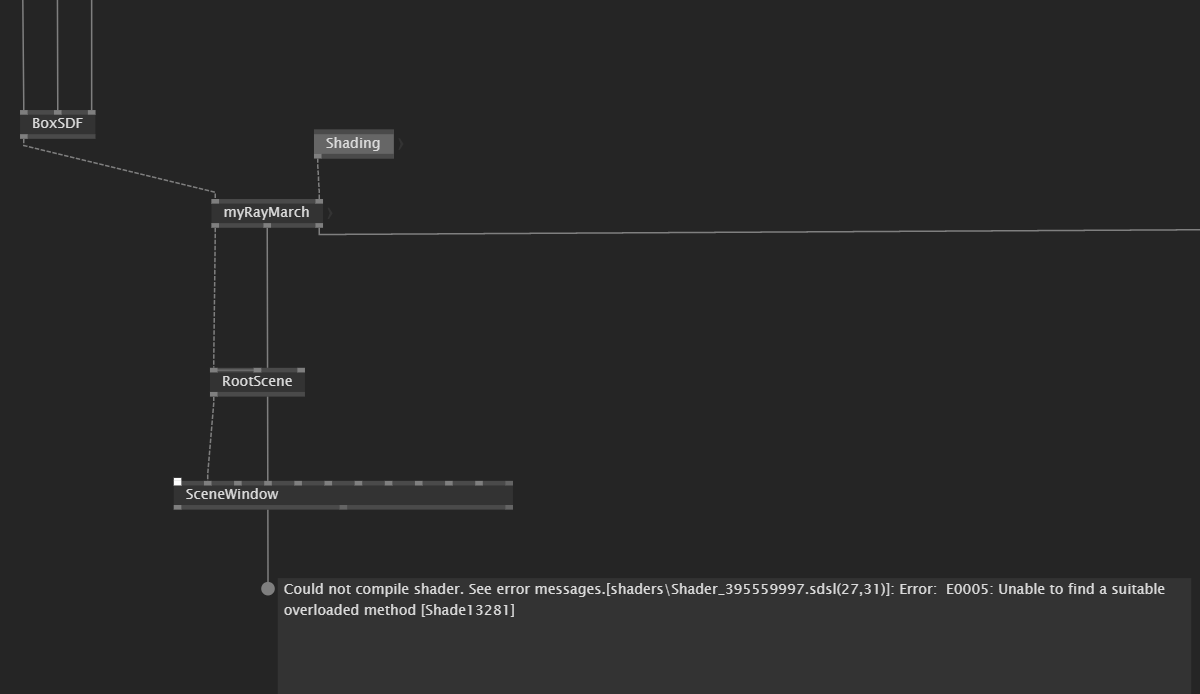Hello everyone!
Let’s say for learning purposes I wanted to write my own struct type to use in Fuse for raymarching.
This struct I called myRay. I wrote it in c# using instructions from the old tutorial " Turning a .NET library into a VL library" from Node Institute. I built the solution and then added the file myRay.dll to dependencies to my patch in VVVV.
So far so good, I can see my myRay type while patching in vvvv. Then I patch CustomFunction (my own kind of raymarch patch) and there I need to use some other CustomFunction (say, called Shading) where I need to use myRay type as function parameter.
Of course I also wrote code templates as sdsl files for two functions.
Actually I did it a while ago and it used to work. My problem is that now after a while I returned to this project and found out that the code does not compile. It gives me an error: Could not compile shader. See error messages.[shaders\Shader_395559997.sdsl(27,31)]: Error: E0005: Unable to find a suitable overloaded method [Shade13281]
so what do I do wrong?
There are some screenshots to make it clear, and also final shader code.
shader Shader_813944945 : VS_PS_Base, Texturing, FuseRayMarch2, FuseCommonSDF, myFuseCommonTypes
{
cbuffer Inputs{
[Link("input_13319")]
stage float3 input_13319;
[Link("input_13322")]
stage float3 input_13322;
[Link("input_13325")]
stage float3 input_13325;
[Link("input_13345")]
stage myRay input_13345;
}
float SDF13337(float3 arg_arg_0){
float3 result_13330 = input_13319 - input_13322;
float3 result_13334 = input_13325 * float3(0.5,0.5,0.5);
float result_13337 = fBox(result_13330, result_13334);
return result_13337;
}
float4 SHADE113393(myRay arg_input_13345){
float4 result_13393 = Shade13391(arg_input_13345);
return result_13393;
}
float4 Shade13391()
{
float4 color = float4(1,0,1,1);
return color;
}
float SDF(float3 p) // should be override unless it's the first imp. Gets called by the other functions
{
return SDF13337(p);
}
float4 RayMarcher13396()
{
float2 uv = streams.TexCoord;
float3 rd = normalize(mul(float4(mul(float4((uv.xy*2-1)*float2(1,-1),0,1),ProjectionInverse).xy,-1,0),ViewInverse).xyz);
float3 ro = ViewInverse[3].xyz;
//sray = makemyRay(ro, rd);
float iter = 0;
float4 color = float4(0,0,0,0);
float4 f = 0;
int maxIter = 180.;
//float3 z = marchRayDefualt2(ray, f, iter, uv, float2(0.01,100), maxIter);
//if(z.x > 0. && z.x < 500)
{
color = 1;//SHADE113393(ray);
}
return color;
}
stage override void VSMain()
{
float4 result_13367 = streams.Position * float4(2,2,0,1);
streams.ShadingPosition = result_13367;
}
stage override void PSMain()
{
float4 result_13398 = RayMarcher13396();
streams.ColorTarget = result_13398;
}
};
And just cleaned the code to make it as simple as possible, so it might look like it does not make much sense :)



